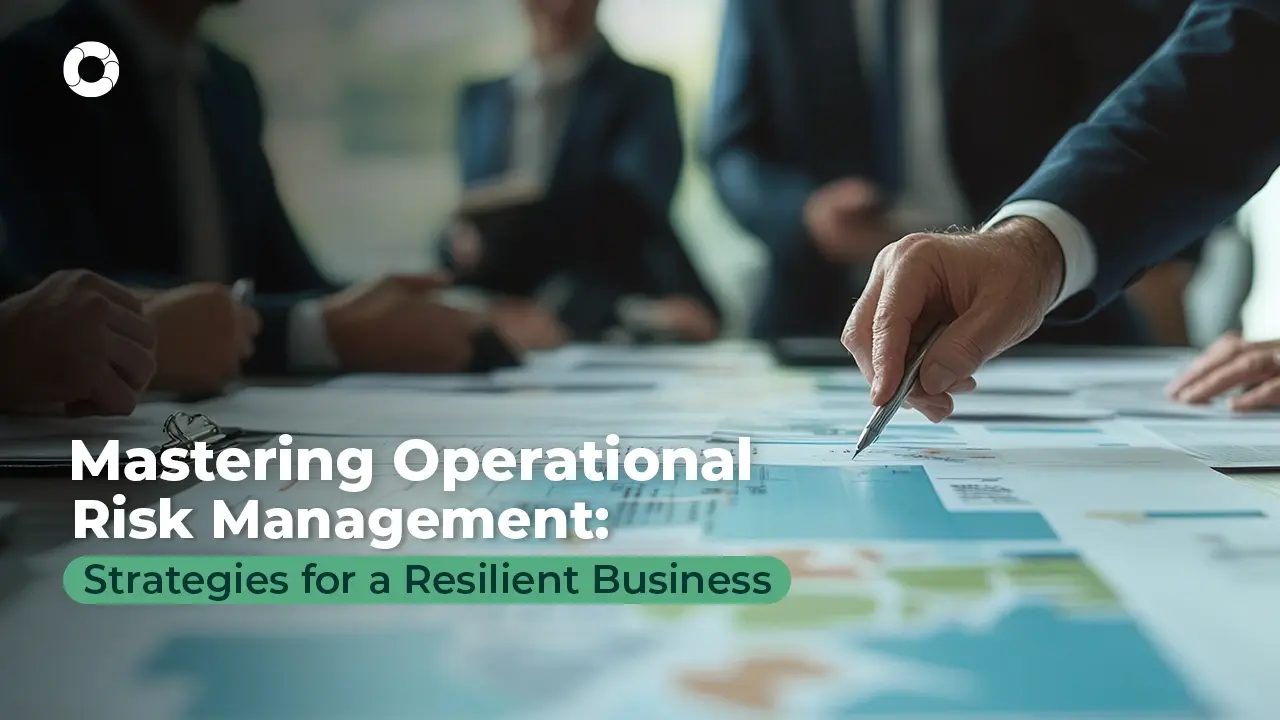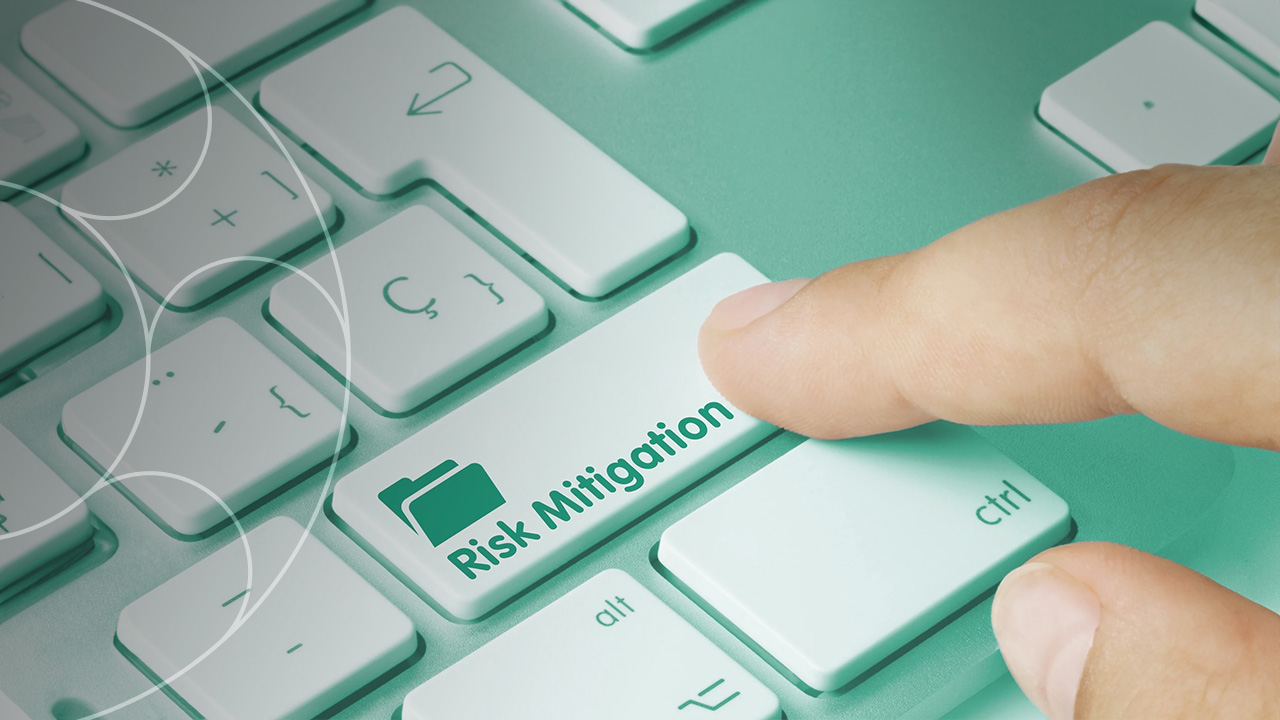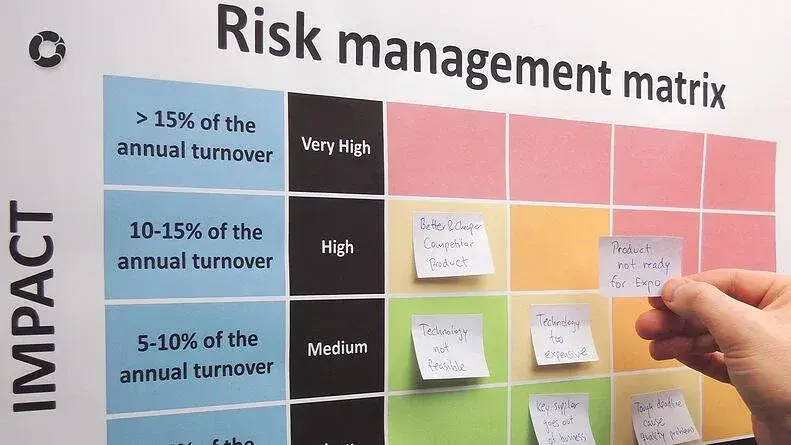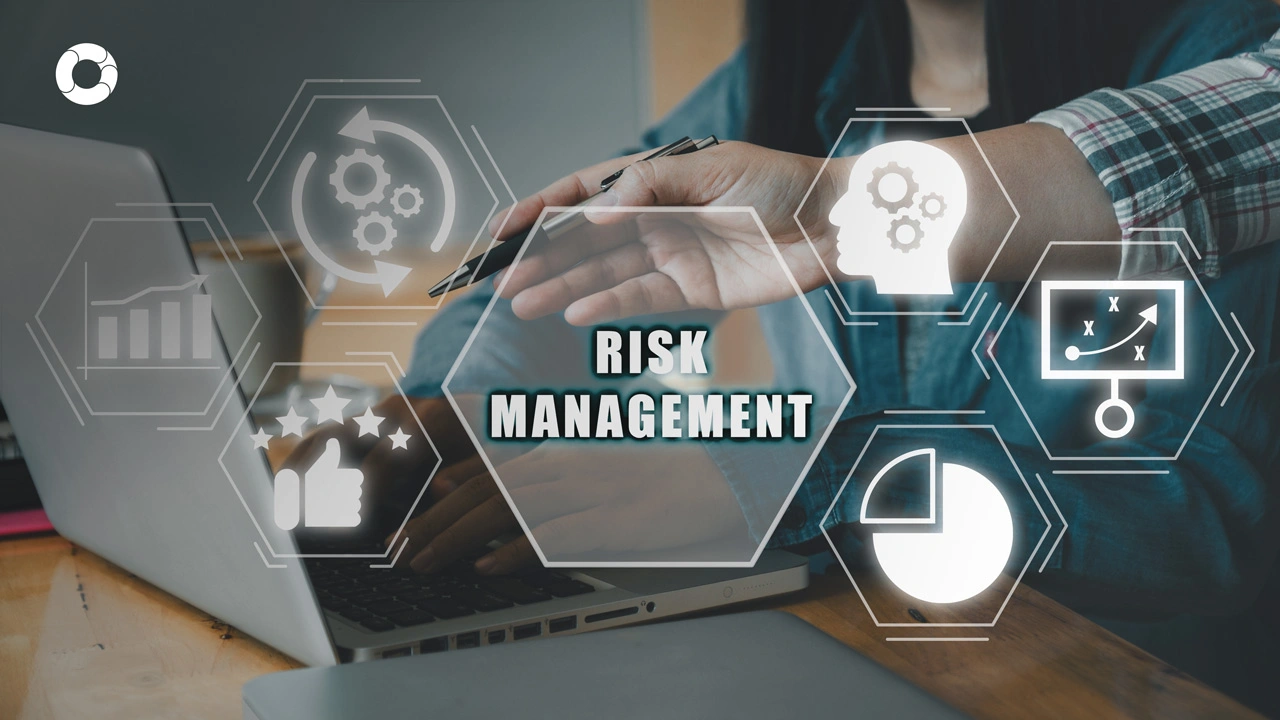Operational Risk Management: Strategies and Examples

Operational risk is a cornerstone in modern business and covers the potential threats arising from internal processes, systems, human errors, or external events that impact an organization’s operations. It can affect businesses across industries, sizes, and geographical locations.
Did you know cyberattacks are the leading operational risk for businesses in 2023? The impact of one can have a staggering effect on your business and its continuity.
In this article, we’ll cover the intricacies of operational risk management, dissecting strategies and real-world examples that fortify businesses against these risks.
From effective business practices, risk mitigation of operational threats and analyzing enterprise risk management examples, this comprehensive guide aims to empower organizations in navigating their risk management frameworks and risk profiles effectively.
Understanding Operational Risk and Key Sources
Operational risk encompasses any risk of losses stemming from inadequate or failed internal processes, systems, human errors, or external events.
Unlike market or credit risks, operational risks are rooted in the day-to-day operations of an organization and can lead to financial, reputational, or regulatory losses.
While market risks concern fluctuations in markets, and credit risks focus on potential financial losses due to defaults, operational risks cover the vulnerabilities that your business is exposed to on a day-to-day basis and can also come from unforeseen events.
Common sources and examples of operational risk include:
- Internal Processes: Inadequate or flawed internal processes can lead to operational risk. For instance, JPMorgan Chase’s 2012 “London Whale” incident resulted from a flawed risk management process and system failures in detection, leading to significant trading losses for the financial giant.
- People: Human error or misconduct is a significant source of operational risk. The well-known case of the Equifax data breach in 2017, caused by a failure to patch a known vulnerability, exemplifies the impact of human error on cybersecurity.
- Systems: Technological failures or cybersecurity threats constitute an operational risk. The WannaCry ransomware attack in 2017 disrupted operations in numerous organizations worldwide, highlighting the vulnerability of systems to cyber threats.
- External Events: Events beyond a company’s control, such as natural disasters or regulatory changes, pose operational risks. The impact of the 2011 Fukushima nuclear disaster on supply chains worldwide underscores the vulnerability of businesses to external events.
Understanding these sources and their real-world implications is vital for organizations to develop robust strategies that prevent significant business disruptions to their business processes.
Steps for Conducting an Operational Risk Assessment
Are you looking to create your own effective operational risk management framework?
Here are the steps to know so you follow the right process management approach:
- Define the Scope and Objectives: Establish the scope of the assessment, outlining the specific areas or processes to be evaluated. Define the objectives to ensure clarity and focus.
- Identify Risks: Use techniques like brainstorming sessions, SWOT analysis, and historical data review to compile a comprehensive list of risks.
- Assess Likelihood and Impact: Once identified, evaluate the likelihood of each risk occurrence and its potential impact on business operations. Utilize risk matrices or heat maps to prioritize risks based on severity.
- Determine Risk Tolerance: Define your organization’s risk tolerance level to determine which risks require immediate attention and which could be accepted or transferred.
- Develop Mitigation Strategies: Make sure to create action plans to mitigate or manage your identified risks. These strategies may involve risk avoidance, reduction, transfer, or acceptance, tailored to each risk's nature and impact.
- Implement Controls and Monitor: Implement risk controls and mechanisms to manage the identified risks effectively. Continuously monitor these controls to ensure their effectiveness over time.
- Review and Update: Regularly review and update the risk assessment process to account for changes in the business environment, new risks, or modifications in operational processes.
Some tools and techniques you can use in the process include risk matrices and heat maps.
- A risk matrix is a graphical tool used to assess and prioritize risks based on their likelihood and impact, often categorized into high-, medium-, or low-risk areas.
- Heat maps are visual representations that display risks using colors to denote their severity or impact levels. They provide a clear overview of risk distribution across different areas.
Mitigating Operational Risk
In line with the previously discussed types of operational risks, here are some measures you can implement for each to mitigate risk:
Internal Processes
- Implement robust internal controls and procedures to streamline operations and reduce the likelihood of errors or inefficiencies.
- Regularly review and update operational processes to align with best practices and evolving industry standards.
Human Error
- Provide continuous training and awareness programs to educate employees about potential risks and best practices to mitigate them.
- Implement dual control procedures or cross-check mechanisms to minimize the impact of human errors and internal fraud.
Systems
- Invest in information security measures such as firewalls, encryption, and regular system patches to protect against cyber threats.
- Conduct regular system audits and penetration testing to identify vulnerabilities and address them promptly.
External Events
- Develop strong business continuity plans to ensure you can continue operating in the event of natural disasters, geopolitical changes, or regulatory shifts.
- Diversify suppliers or establish backup plans to minimize disruption from external events, like external fraud or unnecessary risk exposure.
Technology and Operational Risk Management
Technology plays a significant role in ORM.
Firstly, technology enables real-time data analysis, allowing organizations to monitor operations continuously and identify potential risks promptly. Automation can detect anomalies, patterns, or deviations in data, signaling potential operational risks.
You can also use advanced technologies like machine learning and AI to assist in identifying patterns and trends that might indicate emerging operational risks, even in vast datasets.
What are the benefits of robust operational risk management?
- Specialized software streamlines risk management processes, reducing manual effort and human error.
- Centralizing your risk management helps in facilitating easier access to information, historical data, and risk-related documentation.
- Gaining insights into risk trends and allowing for timely interventions.
- Ensuring compliance with regulatory standards and creating comprehensive audit trails for risk management processes.
Regulatory Compliance and Operational Risk
You should know some key players in the compliance industry. These include:
- The Basel Committee on Banking Supervision (BCBS): Responsible for setting global standards for banking regulations, including guidelines for financial risk and operational risk management within financial institutions.
- ISO 31000: Provides principles and guidelines for risk management, offering a framework applicable to various industries’ strategic risks, including operational risk.
- Sarbanes-Oxley Act (SOX): Focuses on corporate governance and financial disclosure, indirectly impacting operational risk management by ensuring accurate financial reporting.
- GDPR and Data Protection Laws: Emphasize the protection of sensitive data, imposing requirements on organizations to manage data securely and mitigating risks associated with data breaches.
It’s important to stay compliant with these different acts and laws. Non-compliance can lead to penalties, reputational damage, or financial loss. It ensures adherence to industry standards, strengthens risk governance, protects against legal consequences, and keeps your senior management and stakeholders’ confidence in your management of operational risk.
Continuous Monitoring and Reporting
By continuously monitoring risks, your business can identify them as they emerge in real-time (or beforehand). This means you can respond on time and prevent potential issues from escalating.
Regular reporting based on continuous monitoring provides actionable data for informed decision-making, helping allocate resources where they are most needed.
Here are some of the best practices to follow and keep in mind:
- Define key risk indicators (KRIs) tailored to operational risks, enabling organizations to have better risk identification practices to track trends and deviations that signal potential issues.
- The use of dashboards and visual representations like heat maps can convey the level of risk through data clearly and concisely to stakeholders.
- Implement consistent reporting cycles to ensure stakeholders across departments in the monitoring and reporting process, encouraging ownership of risk management.
- Tailor your reports to suit the needs of different stakeholders, providing relevant metrics, impacted intangible and physical assets, details of operational loss (if any), and more to avoid any confusion and clear up unnecessary complexity.
Enhance Your Operational Risk Management with Pirani
Now that you know the intricacies of operational risk management and the best practices to follow, it’s time to move on to the next step.
Meet Pirani: an all-encompassing solution designed to fortify your operational risk management approach.
With our tailored features and risk assessment tools, you can tackle any challenges with operational risks.
Ready to elevate your operational risk management? Contact Pirani today for a tailored demo or more information on how our solution can bolster your risk management strategies.
You May Also Like
These Related Stories

Mastering Operational Risk for Business Resilience

Achieving Compliance Mastery with Pirani

8 Essential Risk Mitigation Strategies for Businesses

Heat map: a tool to optimize risk management

Mastering KRIs: Unlock Risk Management Success

Comments (1)